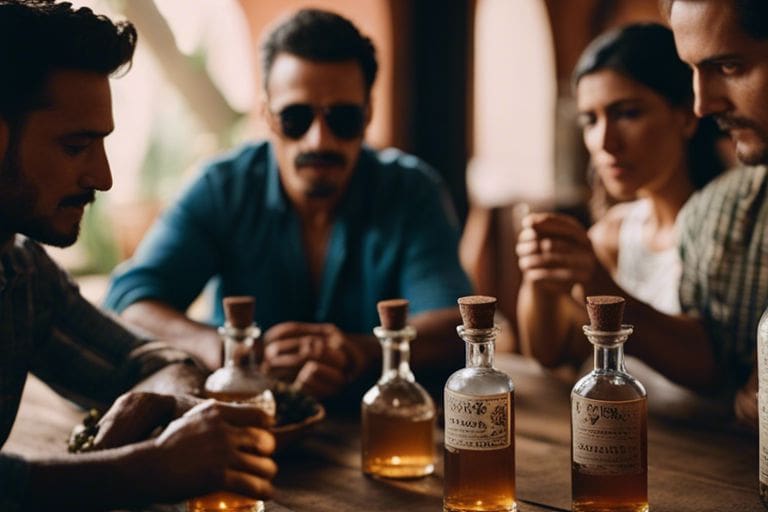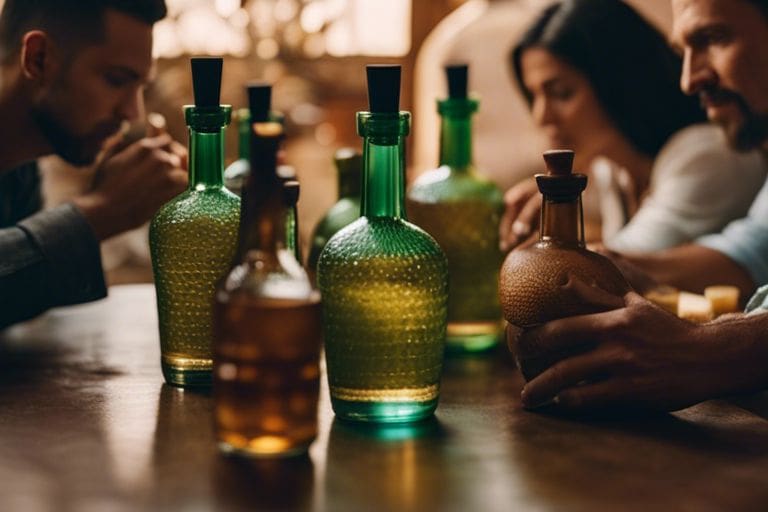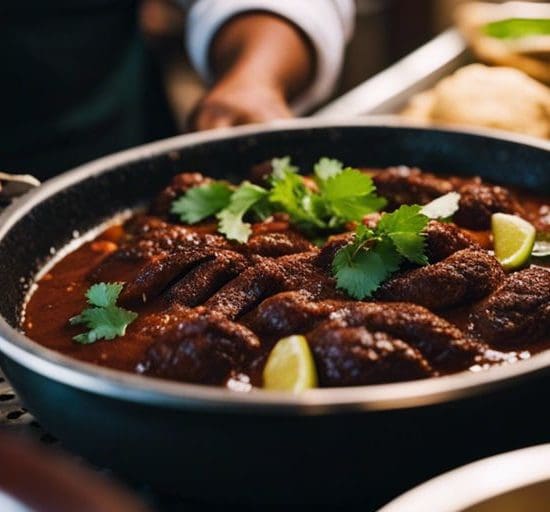
Master The Art Of Mezcal Tasting In Oaxaca – A How-To Guide
Mezcal, a traditional Mexican spirit distilled from agave, has been gaining popularity worldwide for its unique flavors and cultural significance. If you find yourself in the region of Oaxaca, known as the heartland of mezcal production, taking part in a mezcal tasting experience is a must. However, navigating the world of mezcal can be overwhelming for beginners. This how-to guide will equip you with the knowledge and skills needed to appreciate, evaluate, and savor this complex and spirited beverage.
Key Takeaways:
- Understand the Basics: Familiarize yourself with the history, production process, and different types of mezcal before submerging into tasting.
- Find a Reputable Mezcaleria: Look for a bar or restaurant with a knowledgeable staff that can guide you through the tasting experience.
- Use the Proper Glassware: Opt for a copita glass to capture the full aroma and flavor profile of the mezcal.
- Take Note of the Appearance: Observe the color, clarity, and viscosity of the mezcal before moving on to the aroma and taste.
- Sip Slowly and Savor: Take small sips of mezcal to fully appreciate its complexities and allow the flavors to linger on your palate.
- Experiment with Pairings: Try different mezcals with traditional Oaxacan snacks like chapulines (grasshoppers) or fresh orange slices to enhance the tasting experience.
- Engage with the Experts: Don’t hesitate to ask questions and engage with the mezcaleria staff or other enthusiasts to deepen your understanding and appreciation of mezcal.
1. Start with a clean palate – avoid strong flavors beforehand.
2. Pour a small amount of Mezcal – swirl to aerate.
3. Take a small sip – let it linger on your tongue.
4. Note the flavors – smoky, fruity, herbal, floral notes.
5. Consider the finish – long, smooth, or fiery.
6. Compare different Mezcals – explore and enjoy the variety.
Understanding Mezcal
Some say that in order to truly appreciate and master the art of Mezcal tasting, one must first have a deep understanding of this complex and revered spirit. Mezcal is not just a drink, but a cultural symbol deeply rooted in the history and traditions of Oaxaca, Mexico.
The History and Origins of Mezcal
Mezcal, often referred to as the “elixir of the gods”, has been produced in Mexico for centuries. The spirit has its origins in the pre-Hispanic era when indigenous tribes fermented agave sap to create a ceremonial drink known as pulque. Over time, pulque evolved into Mezcal through the process of distillation, which was introduced to Mexico by Spanish conquistadors in the 16th century.
Different Types of Mezcal
Even within the category of Mezcal, there are various types that differ in production methods, agave varieties, and aging processes. Some of the different types are:
| Type | Description |
| Espadin | Most common type, made from the Espadin agave plant |
| Tobala | Produced from wild Tobala agave, known for its complex flavors |
| Mezcal Artesanal | Handcrafted Mezcal, made in small batches with traditional methods |
| Joven | Unaged Mezcal, showcasing the agave’s pure flavors |
| Anejo | Aged Mezcal, rich in woody and smoky notes |
Perceiving the nuances in flavor and aroma across these different types is vital in understanding and appreciating the diversity of Mezcal.
Preparing for a Mezcal Tasting
What You Need to Know Before You Start
After deciding to begin on a mezcal tasting journey in Oaxaca, there are a few necessary things to consider before diving in. First and foremost, it’s crucial to understand that mezcal is a distilled alcoholic beverage made from the agave plant, similar to tequila but with a unique flavor profile. Mezcal can vary greatly in taste, depending on the agave variety used and the production methods employed by different mezcaleros. So, be prepared for a diverse and exciting tasting experience.
Essential Tools for Mezcal Tasting
Tools play a vital role in enhancing your mezcal tasting experience. For a successful and enjoyable tasting session, it’s necessary to have the right equipment on hand. Some of the necessary tools you’ll need include copitas (small clay or glass cups) for sipping the mezcal, a jicara (gourd cup) for traditional sipping, a piece of orange or sal de gusano (worm salt) for enhancing the flavors, and a botella pequena (small bottle) of water to cleanse your palate between tastings.
For instance, the copita is specifically designed to capture the aromas of the mezcal, allowing you to fully appreciate its complexities. Meanwhile, the jicara adds a touch of tradition to your tasting experience, connecting you to the rich cultural heritage of mezcal production in Oaxaca. Having the right tools not only elevates your tasting experience but also ensures you can fully appreciate the nuances of each mezcal you sample.
The Step-By-Step Tasting Process
To truly appreciate the complexity and depth of flavors in mezcal, it is necessary to master the art of mezcal tasting. This process involves more than just sipping a drink – it’s about engaging all your senses to fully experience the rich cultural heritage and craftsmanship behind this beloved Mexican spirit.
How to Organize a Tasting Session
Assuming you have gathered a selection of quality mezcals from different distilleries, it is important to set the stage for your tasting session. Find a quiet and well-lit environment free from distractions, where you can focus solely on the aromas and flavors of the mezcal. Make sure to have traditional clay copitas (small cups) or tulip-shaped glasses on hand to properly appreciate the mezcal’s bouquet.
With your tasting environment set, proceed to pour a small amount of mezcal into each glass. Start with a clear mezcal to observe its color and viscosity. Swirl the glass gently to release the aromas, then bring it to your nose to inhale deeply. Take note of the initial scents before taking your first sip, allowing the flavors to linger on your palate before swallowing. Discuss and compare notes with your fellow tasters to gain a deeper appreciation of the nuances in each mezcal.
Detailed Steps in the Tasting Experience
The tasting experience begins with the visual examination of the mezcal. Look for clarity and consistency in color, noting any variations that may hint at the aging process or ingredients used. Next, focus on the aroma by gently swirling the glass and bringing it close to your nose. Inhale slowly to detect the subtle hints of agave, smoke, fruits, or spices that characterize different mezcals.
Factors Influencing the Mezcal Experience
Once again, when it comes to experiencing the intricate flavors of mezcal, there are several key factors that play a significant role in shaping your tasting journey. Understanding these factors can help you appreciate and enjoy mezcal even more.
- Terroir: The land where the agave plants used to make mezcal are grown has a profound impact on the final product. Factors such as soil composition, altitude, climate, and even the local flora all contribute to the unique flavors found in different varieties of mezcal.
- Production Methods: The techniques and processes used during the production of mezcal can greatly influence its quality and taste. From the roasting of the agave hearts to the fermentation and distillation methods employed, each step plays a crucial role in determining the final flavor profile of the spirit.
The Role of Terroir in Mezcal Flavors
Terroir: The concept of terroir in mezcal refers to the environmental factors that influence the growth of the agave plants, which in turn affect the flavor profile of the final spirit. Agave plants grown in different regions of Oaxaca will absorb unique characteristics from the soil, climate, and surrounding vegetation, resulting in distinct flavors and aromas in the mezcal produced.
The Impact of Production Methods on Quality
Role: The production methods used in crafting mezcal are crucial in determining the quality and taste of the spirit. Everything from the selection of agave plants to the roasting techniques and fermentation processes can significantly impact the final product. Master mezcal makers pay close attention to every step of the production process to ensure that the mezcal they create is of the highest quality.
Assume that you want to explore deeper into the mezcal production process and experience the diverse flavors of this traditional spirit, reading ‘A Guide to Drinking Mezcal in Oaxaca’ can provide you with valuable insights and tips on how to make the most of your mezcal tasting experience in Oaxaca.
Advanced Mezcal Tasting Tips
Not all Mezcal tastings are created equal. To truly master the art of Mezcal tasting in Oaxaca, you need to explore into the Oaxaca Mezcal Tour: Behind the Scenes of an Active …. Here are some advanced tips to elevate your Mezcal tasting experience:
How to Detect Nuances and Subtleties
Tips: When tasting Mezcal, pay attention to the nuances and subtleties that make each sip unique. Start by observing the color and viscosity of the Mezcal in your glass. Swirl it gently to release aromas before taking a deep inhale. Note any scents of roasted agave, citrus, smoke, or earthiness. When you take a sip, let it linger on your palate to detect the layers of flavors that unfold over time. Look for hints of spices, fruits, herbs, and minerals that add complexity to the Mezcal.
| Important Details | Dangerous Details |
| Pay attention to the finish, which can be smooth, smoky, or peppery, indicating the quality and craftsmanship of the Mezcal. | Be cautious of Mezcal that has a harsh or overly alcoholic taste, as it may indicate poor distillation or low-quality ingredients. |
| Experiment with different Mezcal brands and production methods to develop a nuanced palate and appreciation for the diversity of this spirit. | Avoid overindulging in Mezcal, as its high alcohol content can lead to intoxication if consumed irresponsibly. |
Pairing Mezcal with Food
Pairing: Mezcal’s complex flavors make it a versatile spirit for food pairing. When matching Mezcal with food, consider the dominant flavors of the spirit and how they complement or contrast with the dish. Smoky Mezcals can enhance grilled meats and spicy dishes, while fruity Mezcals can balance the richness of chocolate or desserts. Experiment with different pairings to discover unique flavor combinations that elevate both the Mezcal and the food.
Subtleties: The key to mastering Mezcal tasting lies in paying attention to the subtleties that differentiate various expressions. By honing your palate and exploring different Mezcals, you can develop a deeper understanding and appreciation for this traditional Mexican spirit.
Pros and Cons of Mezcal Consumption
All mezcal lovers must understand the pros and cons of consuming this unique spirit. While mezcal can provide a delightful tasting experience, it is important to be aware of the potential benefits and risks associated with its consumption. Below is a breakdown of the pros and cons of indulging in this traditional Mexican beverage.
| Pros | Cons |
| Rich cultural heritage | Potential for overconsumption |
| Unique flavors and aromas | Health risks associated with alcohol consumption |
| Supporting local artisans | Alcohol dependence and addiction |
| Social bonding and sharing experiences | Impaired judgment and coordination |
| Enjoyed in moderation can be part of a cultural experience | Legal implications if consumed irresponsibly |
Health Benefits and Risks
If consumed in moderation, mezcal can offer some potential health benefits. Studies suggest that moderate alcohol consumption may have cardiovascular benefits, but it’s important to note that excessive alcohol intake can have severe repercussions. Chronic consumption can lead to liver damage, addiction, and other serious health issues, making it crucial to enjoy mezcal responsibly.
Social and Economic Impact on Oaxaca
Pros and cons of mezcal consumption extend beyond individual health considerations. The mezcal industry plays a significant role in the social and economic development of Oaxaca, providing employment opportunities and sustaining generations-old traditions. However, excessive consumption can strain local resources and contribute to social issues such as alcoholism. By supporting responsible consumption and ethical mezcal producers, visitors can positively impact the social and economic landscape of Oaxaca.
Summing up
Drawing together the intricacies of mezcal production, the importance of terroir, and the art of tasting, this how-to guide provides a comprehensive overview for those looking to master the art of mezcal tasting in Oaxaca. By understanding the traditional methods employed by mezcaleros, the unique characteristics of different agave varietals, and the sensory experience of tasting mezcal, enthusiasts can deepen their appreciation for this ancient spirit rooted in Mexican culture.
Whether you are a novice eager to explore the world of mezcal or a seasoned aficionado seeking to refine your palate, this guide offers valuable insights and practical tips to enhance your tasting experience. With Oaxaca as the backdrop for this immersive journey, there is no better place to examine into the rich history and complex flavors of mezcal, ultimately allowing you to savor each sip with newfound knowledge and appreciation.
FAQ
Q: What is Mezcal?
A: Mezcal is a distilled alcoholic beverage made from the agave plant, primarily in Mexico. It is known for its smoky flavor and unique production process.
Q: What makes Oaxaca special for Mezcal tasting?
A: Oaxaca is considered the heart of Mezcal production, with a rich cultural history and diverse agave varieties that create unique flavors in the Mezcal produced there.
Q: How is Mezcal different from Tequila?
A: Mezcal and Tequila are both agave-based spirits, but they differ in production methods, regions of origin, and taste profiles. Mezcal is typically smokier and more complex in flavor compared to the smoother Tequila.
Q: What should I look for when tasting Mezcal?
A: When tasting Mezcal, look for notes of smoke, earth, citrus, and agave sweetness. Pay attention to the aroma, taste, and finish to fully appreciate the complexities of the spirit.
Q: How should Mezcal be served during a tasting?
A: Mezcal is best enjoyed neat in a copita glass to fully savor its aromas and flavors. Avoid adding mixers or ice, as they can dilute the essence of the spirit.
Q: Are there specific food pairings that enhance Mezcal tasting?
A: Mezcal pairs well with dishes that have bold flavors such as spicy Mexican cuisine, grilled meats, and citrus-infused dishes. The smoky notes of Mezcal complement these flavors beautifully.
Q: How can I best appreciate Mezcal during a tasting experience?
A: To fully appreciate Mezcal, take small sips, swish the spirit around your mouth to coat all taste buds, and pay attention to any evolving flavors. Take your time to savor each sip and appreciate the craftsmanship that goes into each bottle.





